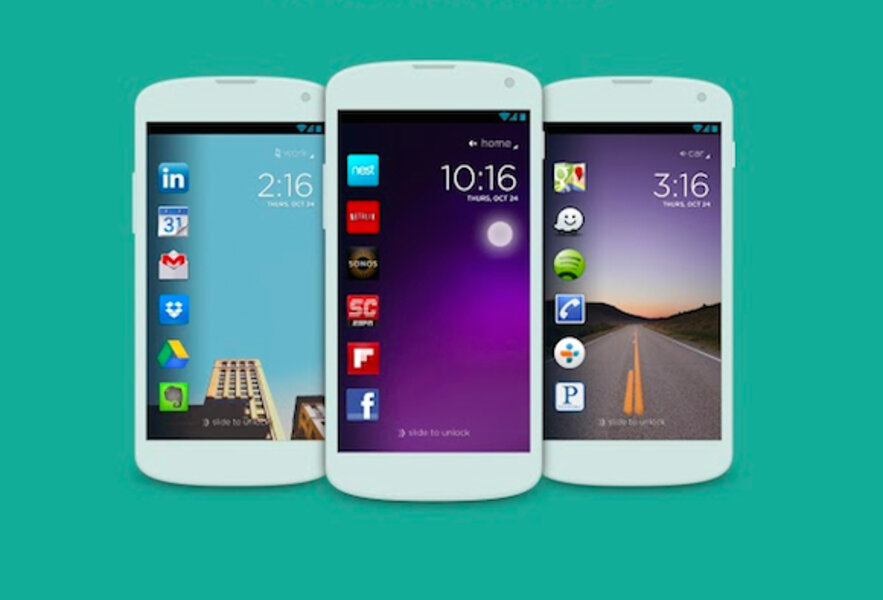What does Twitter want with lock screen app Cover?
Twitter has acquired Cover, an app that makes it easier to customize the lock screen of Android phones, for an undisclosed sum.
The tagline for Cover is "the right apps at the right time" – a nod to the ability of the software to rejigger your lock screen depending on your location. If you're driving, for instance, Cover will recognize you're in the car, and bring up a map application. If you're at work, it might display your calendar and various messaging apps, along with a tailor-made wallpaper. The app was launched last October.
"Twitter, like Cover, believes in the incredible potential of Android," Cover founders Todd Jackson, Gordon Luk, and Edward Ho write in a blog post announcing the acquisition. "They share our vision that smartphones can be a lot smarter – more useful and more contextual – and together we’re going to make that happen. We’ll be building upon a lot of what makes Cover great, and we’re thrilled to create something even better at Twitter."
Cover will remain on the Google Play store for the time being, the team adds.
So why buy Cover? Well, as Jacob Kastrenakes of The Verge notes, it could be about acquiring some Android-savvy talent. Or it could be about dominating the lock screens of millions of smart phones.
"Facebook attempted something similar last year with the launch of Facebook Home, and though it's failed to gain much traction in the time since, it's clear why Facebook gave it a shot: taking over a phone's lock screen would give it a powerful advantage by making its own content the first thing that a person sees when checking their phone," Mr. Kastrenakes writes.
Meanwhile, Ingrid Lunden of TechCrunch sees a possible expansion of the Twitter footprint.
The acquisition, she writes, "gives Twitter some interesting potential routes for how it might longer-term try to deliver its stream of followers’ new and messages outside of its own app. Widgets featuring Twitter, Facebook, Pinterest and other streams are already quite common; Cover could work on ways to formalise and improve that experience."






